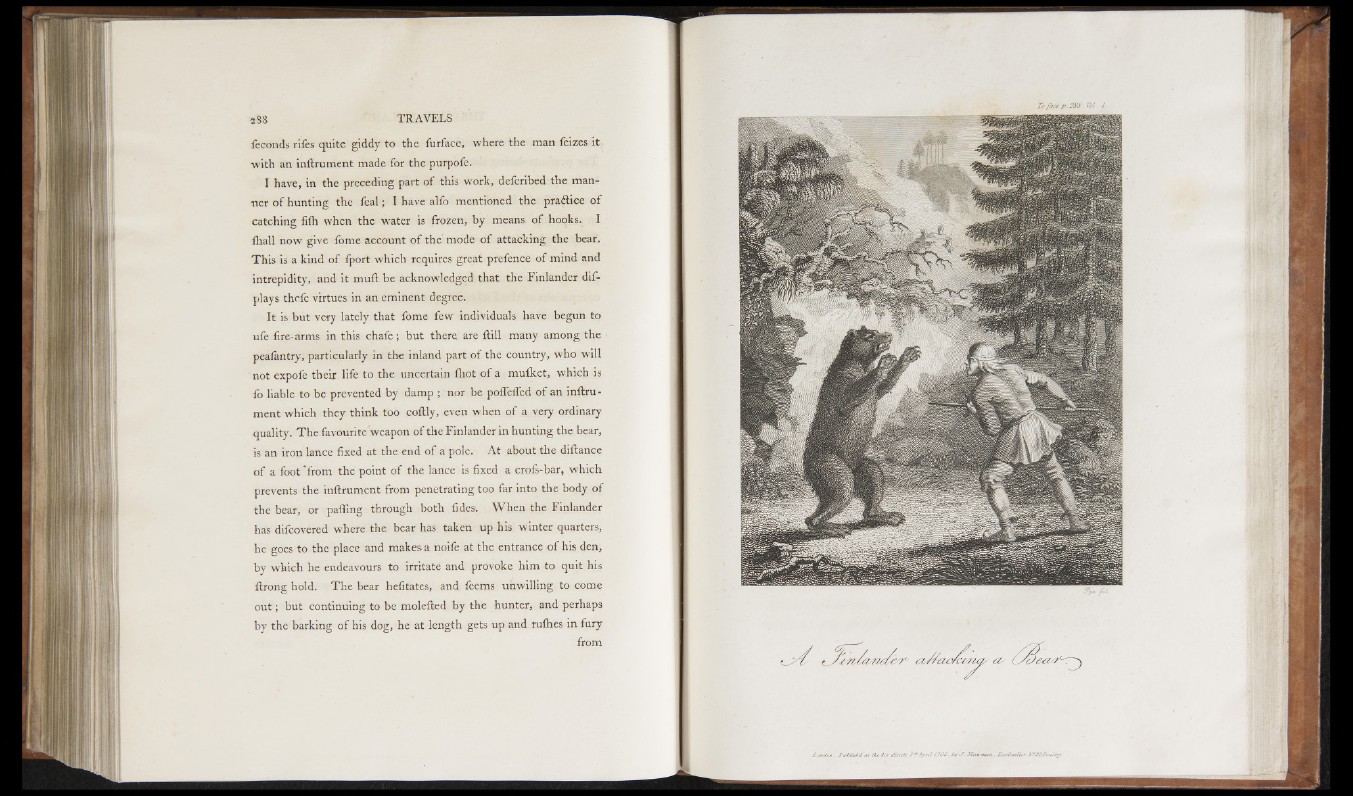
feconds rifes quite giddy to the furface, where the man feizes it
with an inilrument made for the purpofe.
I have, in the preceding part o f this work, defcribed the manner
o f hunting the fea l; I have alfo mentioned the practice o f
catching fiih when the water is frozen, by means o f hooks. I
fhall now give fome account o f the mode o f attacking the bear.
This is a kind o f fport which requires great prefence of mind and
intrepidity, and it muli be acknowledged that the Finlander displays
thefe virtues in an eminent degree.
It is but very lately that fome few individuals have begun to
ufe fire-arms in this chafe; but there are ilill many among the
peafantry, particularly in the inland part o f the country, who will
not expofe their life to the uncertain fhot o f a mufket, which is
fo liable to be prevented by damp ; nor be poflefled o f an inftru-
ment which they think too coilly, even when o f a very ordinary
quality. The favourite weapon o f the Finlander in hunting the bear,
is an iron lance fixed at the end o f a pole. At about the diilance
o f a foot‘ from the point o f the lance is fixed a crofs-bar, which
prevents the inilrument from penetrating too far into the body o f
the bear, or pafiing through both fides. When the Finlander
has difcovered where the, bear has taken up his winter quarters,
he goes to the place and makes a noife at the entrance o f his den,
by which he endeavours to irritate and provoke him to quit his
ilrong hold. The bear hefitates, and feems unwilling to come
o u t ; but continuing to be moleiled by the hunter, and perhaps
by the barking o f his dog, he at length gets up and ruihes in fury
from
. Iy.n./e/yrerzei'?'' ¿z- L /cs< sa ^7 ^
London .. Publish'd as the A c t directs 8 ‘I-April I S 0 2 . bif J '■ Man'man,, B ookselle r Alt'¿2Poultry.